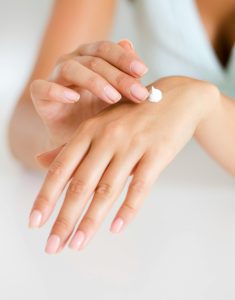You found our article, Why Do My Nails Grow So Fast?
You just cut and shaped your nails last week, but already they have grown out, leaving you wondering to yourself, “why do my nails grow so fast?” It can be difficult to maintain the length and shape of your manicure if your nails are growing too fast. Discover why nails grow fast and how to best manage them.
Interested in nail care tips? Check out our previous article, 6 Expert Tips To Cut Your Nail Polish Drying Time.
This article includes:
- Why do my nails grow so fast?
- Fast growing fingernails
- What makes nails grow super fast
- How to maintain long nails
Let’s get to it!
Why Do My Nails Grow So Fast?
Nail Anatomy and Growth Cycle
Nails, composed of a tough protein called keratin, are more than just a canvas for nail polish—they also serve to protect the sensitive tips of our fingers and toes. Understanding the anatomy and growth cycle of nails is like peeking into a microscopic world beneath our fingertips.
The nail matrix, located at the base, is responsible for producing new nail cells. As new cells form, older nail cells are pushed outwards, compressing and hardening to form the visible nail plate. The nail bed lies beneath the nail plate, connecting it to the blood supply, determining the color and health of the nails. Cuticles, the thin strip of skin at the base of the nail, act as a protective barrier against bacteria and debris.
Nails undergo a fascinating growth cycle. The anagen phase, where cells in the nail matrix divide and multiply, kick starts the process. Next is the catagen phase, a transitional stage where growth slows. Finally, the telogen phase is a resting period before old nail cells are shed, completing the cycle.
Why Do My Nails Grow So Fast?
Nail growth is influenced by various factors, primarily genetics, overall health, and age. Genetic predisposition plays a significant role in determining the speed at which nails grow. Some individuals have a genetic makeup that encourages rapid nail growth. Additionally, good overall health and a balanced diet rich in essential nutrients like biotin, protein, and vitamins promote nail growth. Age can also impact nail growth, with younger individuals typically experiencing faster nail growth compared to older adults. Ultimately, a combination of genetic factors and overall health contributes to the rate at which your nails grow.
Factors Influencing Nail Growth Rate
There are several reasons why nails grow fast, including genetics, nutrition, blood circulation, hormones, overall health, age, exposure to injury or trauma, and the environment.
Genetics
One of the primary factors that influence the speed at which your nails grow is genetics. Just like other aspects of our physical appearance, nail growth is influenced by our genes. If your parents or grandparents had fast-growing nails, there’s a good chance that you’ve inherited this trait as well. Genetics determine the baseline nail growth rate and the thickness of the nail plate.
Nutrition
The food you consume has a significant impact on the growth and health of your nails. Essential nutrients such as protein, biotin, vitamins A and D, zinc, and iron promote nail growth. Including a variety of nutrient-rich foods that contain these nutrients–such as eggs, nuts and seeds, and legumes–in your diet will lead to stronger and faster nail growth.
Blood Circulation
One of the factors that can contribute to fast nail growth is good blood flow and circulation. When you have healthy blood flow, your nails receive the necessary nutrients and oxygen to grow quickly. Your blood carries important nutrients and minerals that are essential for nail growth. This may also explain why nails on your dominant hand tend to grow faster than the ones on your non-dominant hand.
Hormones
Hormones play a pivotal role in regulating various bodily functions, including the nail growth rate of each individual. Thyroid hormones, particularly thyroxine and triiodothyronine, play a crucial role in nail growth. Hormonal fluctuations can also influence the rate of nail growth. For instance, during pregnancy, women often experience an increase in estrogen levels, which can lead to faster nail growth. However, during menopause, women experience a decrease in estrogen levels that corresponds with a slowed nail growth rate.
Health Conditions and Medications
Individuals with conditions like hyperthyroidism, anemia, or diabetes may experience faster nail growth. Individuals with psoriasis may experience weakened or slowed nail growth rate. Some medications, such as chemotherapy drugs, can also slow down nail growth rate due to the effect of the medicine on cell division and regeneration.
Age
Generally, nails tend to grow faster in younger individuals and slow down as we age. The nail matrix, where nail cells are produced, becomes less active as we get older, resulting in a decrease in nail growth rate. However, this varies from person to person and can also be influenced by lifestyle factors and overall health.
Trauma or Injury
Trauma or injury to the nail bed can affect the nail growth rate. People who bite their nails, use their nails as tools, or pick at their cuticles may experience slower nail growth or other nail problems.
If you injure your nail, it may take longer to grow normally. For example, trapped blood under the nail, known formally as a subungual hematoma, can take 2 to 3 months to heal for a fingernail and up to 9 months for a toenail. If there is severe damage to the nail bed, the nail may be malformed or cracked when it grows back. Or, it may fail to regrow.
Environmental and External Influences
Many of us wonder why our nails seem to grow fast or slow. While genetics, diet, and overall health are important influences on nail growth rates, environmental and external factors influence nail growth in many ways too.
Environmental factors such as temperature and climate can affect nail growth. Warmer climates tend to promote faster nail growth compared to colder ones. Heat increases blood circulation, delivering essential nutrients to the nail matrix and stimulating faster nail growth.
The type of work a person does can influence nail growth. Jobs that involve frequent use of hands, such as typing or playing musical instruments, can inadvertently stimulate nail growth due to the constant movement and stimulation of the fingertips.
Finally, your nail care routine can also impact growth. Keeping your nails clean and well-maintained can prevent breakage, allowing them to grow longer. Regular filing and trimming can help manage the length and give the illusion of faster growth. Shop sundays studios’ Manicure Kit to get everything you need for a nail care routine!
Amy’s Tips for Managing Rapid Nail Growth
For people experiencing a rapid nail growth rate, here is a list of tips that can help you manage to keep a nice manicure even when your nails are growing too fast:
- Regular Maintenance: Trim nails to your desired length to manage rapid growth effectively and ensure nails stay at the desired length.
- Hydration and Moisturization: Keep nails and cuticles moisturized to prevent brittleness and breakage.
- Balanced Diet: Maintain a diet rich in nutrients essential for nail health and growth.
- Gentle Nail Care: Avoid excessive trauma and injury, and use gentle nail care products to protect the nails.
- Restorative Care: If you do experience trauma to your nails, consider applying a cuticle oil to the nail and cuticle to promote healing – Shop sundays studios’ healing cuticle oil now!
Final Thoughts
The speed at which your nails grow is influenced by a combination of genetic, lifestyle, and health factors. By gaining a better understanding of the natural process of nail growth and why nails grow fast, it will be easier to develop an effective strategy to keep your nails at the desired length without compromising their appearance or health.
This article represents general advice. If you have concerns about your nail growth or suspect underlying health issues, it’s always a good idea to consult with a healthcare professional for personalized guidance.
Enjoyed this article? Check out our previous article, Dry Cuticles: A Guide to Understanding and Healing Your Skin.






